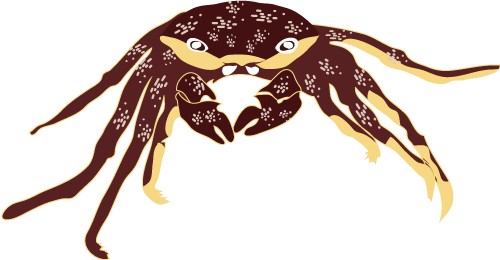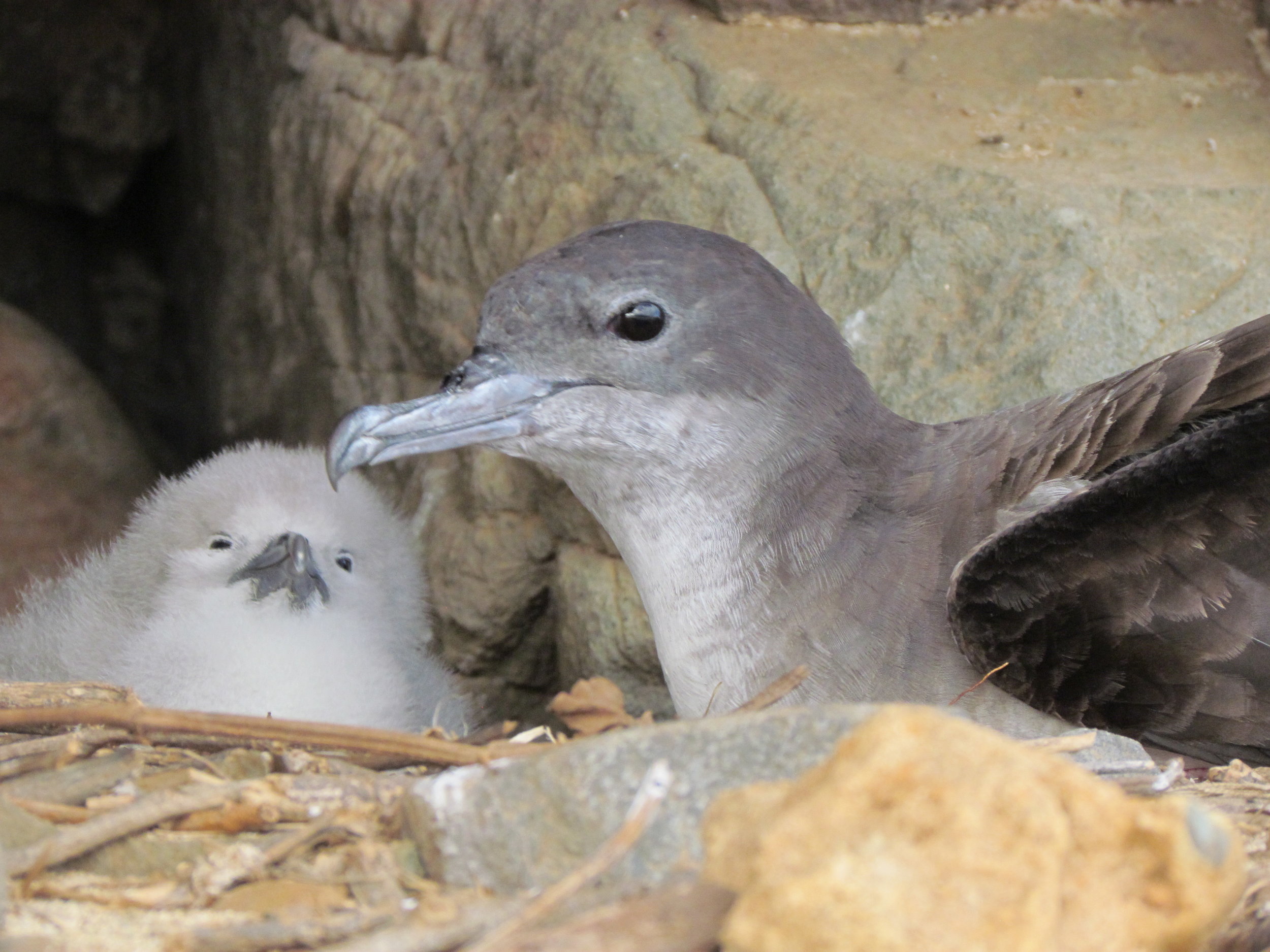
Kailua Wildlife
Kailua Wildlife: Sea turtles, bird watching and more
Enter a place where sea turtles roam the shallow reefs and flocks of birds circle the offshore islands above. Kayaking is the main form of transportation and the noises of the city are left behind. Here at Kailua Beach Adventures we strive to be stewards of Kailua Bay and all of its residents. The bay is our home and we take pride in sharing it with visitors and locals alike. When it comes to the wildlife in the bay we feel a great responsibility to protect the various species that coexist here with us. Everyday, we do this through educating our guests about the unique animals that reside here. Our guides receive extensive hands-on training that focuses heavily on wildlife in the bay so that they can inform our guests when out on the water. Additionally, we have the Kailua Bay Learning Center, a part of our facilities that is dedicated to educating recreation users about the precious wildlife that lives here. Below you will find more information about some of the Bay’s most important residents. Stop by the Kailua Bay Learning Center to learn more or rent a kayak to witness this natural habitat first hand.
Report stranded, entangled, or injured marine mammals (whales, dolphins, and seals) by calling the NOAA Fisheries Marine Mammal Hotline at 1-888-256-9840.
If you encounter an entangled or stranded sea turtle, please call: (808) 725-5730
Report Violations of the Marine Mammal Protection Act or Endangered Species Act, by calling NOAA Fisheries Office of Law Enforcement at 1-800-853-1964
Hawaiian Green Sea Turtle
“Honu” make Kailua their year round home between periodic visits to French Frigate Shoals in the Northwestern Hawaiian Islands for breeding. These turtles can be seen spending their days eating seaweed, or Limu, off the coral heads and poking their heads out for the occasional breath of air.
Over 275 different species of seaweed have been found in the stomachs of Hawaiian green turtles. In order to deal with this diet of roughage, green turtles have microflora living in their large intestine that help breakdown the cellulose that is otherwise indigestible. Other food items they consume in lesser amounts include jellyfish, salps, mollusks, sponges, and tubeworms. East Pacific green turtles tend to eat more animal prey than other populations.
Viewing Rules: If you see sea turtles out basking on the beach or in the water while snorkeling, admire them from a reasonable distance and do not alter their natural behavior.Please do not attempt to touch, feed or harass sea turtles.
Seabirds
Wedge-Tailed Shearwaters
Bird watchers in Kailua will not be disappointed as these islands offer the last sanctuary for ground-nesting sea birds in Hawaii. The most common species include Wedge-Tailed Shearwaters, or ‘Ua’u Kani, Brown Noddies, or Noio Koha, and the occasional Blue Footed Boobie and Albatross. The Shearwaters emit an eerie, wailing call from its burrow during the night, comprising of an inhaling component, ‘OOO’, and an exhaling component ‘errr’. This ghost-like sound gives rise to the Hawaiian name for this species, ‘ua’u kani’, which means ‘calling or moaning petrel’. They feed during the day and consume larval forms of goat fish, mackerel scad, and flying squid driven to the surface by schools of predatory fish, such as skipjack tuna.Their courtship ritual begins shortly after arrival on the islands in late March. Egg laying occurs throughout the month of June. Chicks hatch during late July through late August. Parents feed regurgitated squid and stomach oil to chicks. Fledging occurs in 100-115 days and parent desertion of the chick occurs shortly before.
Viewing Rules:Give ample distance as to not disturb sea-birds. Avoid eye-contact as this may indicate aggression to the birds. Stay within the rope barriers, away from the center and or hill side of the islands (Mokulua and Popoi`a). Walking on shearwater nests will crush the eggs and or fledgling birds inside.
Great Frigatebird
Called Iwa in Hawaiian, which means “theif.” A large bird with a long wingspan, forked tail, and hooked beak these birds will occasionally attack other birds midair and steal their food. Males have a red throat pouch that they inflate during courtship displays.
Red-footed Booby
A smaller bird than the Brown Booby with red feet and a white belly. They are known for their bright blue beaks and are often seen perched on rocks and trees near the shore.
Brown-Footed Booby
A medium-sized bird with a brown body, white belly, and blue feet. They are excellent divers and can plunge into the water at high speeds to catch fish.
SOOTY TERN
These birds are medium-sized and have black feathers with white underparts, as well as a distinctive white forehead patch. Sooty terns are known for their distinctive “tik-ik-ik” call and their aerial acrobatics as they hunt for fish. They typically breed on remote islands and atolls in the Pacific, and migrate long distances in search of food.
Bulwer’s Petrel
These birds are small and compact with a distinctive “tubenose” bill that is used to help them find food. They have dark brown or black plumage with a white underbelly and a forked tail. Bulwer's petrels breed on remote islands in the Pacific and Indian Oceans and migrate long distances in search of food. Despite their small size, they are known for their strong flight and their ability to navigate long distances over open ocean.
Hawaiian Monk Seal
Kailua Bay also offers the chance to see a highly endangered, endemic species to Hawaii. This species of seal is unique in that they thrive in a tropical environment, while most other seals occupy frigid waters. With just over 1,000 monk seals remaining in the wild, encountering them in the bay or on Kailua’s offshore islands is a special, unique opportunity. These wild, majestic animals can be found playing in the waves surrounding the Mokulua Islands and resting on the beach of Moku Nui. Hawaiian monk seals are 7 to 7.5 feet in length, with females larger than males. Pups weigh only 25 to 35 pounds when born, but grow up into 400 to 600 pound adults. Hawaiian monk seals live up to 25 to 30 years in the wild. Fun Fact:There are two living species of monk seals: Hawaiian monk seal (Monachus schauinslandi) and Mediterranean monk seal (Monachus monachus).
Viewing Rules: Give seals space if you see them on the beach or in the water – stay at least 150 ft. away or stay behind any signs or ropes. More Guidelines.
HUMPBACK Whales
During the winter months, visitors to Kailua can witness the spectacular sight of humpback whales breaching and playing in the waters off the coast. These massive creatures can grow up to 50 feet in length and weigh as much as 40 tons. Humpback whales are known for their distinctive songs, which can be heard for miles underwater. The best time of year to see these animals in during February and March every year.
Dolphins
Several species of dolphins can also be spotted in the waters off Kailua, including:
Spinner Dolphin: A small dolphin with a slender body and long, thin beak. They are known for their acrobatic displays, spinning and jumping out of the water.
Bottlenose Dolphin: A larger dolphin with a short beak and grayish-brown coloration. They are often seen swimming in groups and are known for their friendly and playful behavior.








